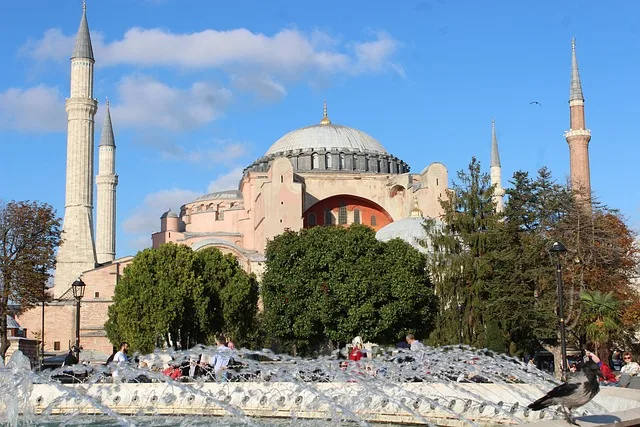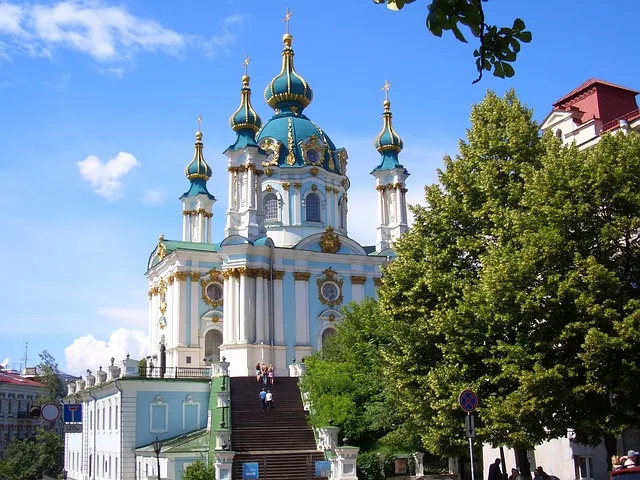Fast forward to 1453, and the story takes a dramatic turn. When the Ottomans conquered Constantinople, Hagia Sophia was transformed into a mosque, symbolizing a new era. Can you picture the vibrant call to prayer echoing through its grand halls, mingling with the remnants of Christian mosaics? It’s like a beautiful tapestry woven from different threads of history, each adding depth and color to the narrative.
As you walk through its vast interior, you can almost feel the weight of its past. The intricate mosaics, now partially covered, tell stories of saints and emperors, while the soaring minarets stand tall, reaching for the sky. It’s a place where faith transcends boundaries, inviting everyone to reflect on their beliefs. The Hagia Sophia Mosque history is not just about bricks and mortar; it’s about the people who have walked through its doors, each leaving a mark on its legacy.
Isn’t it fascinating how a single building can embody the spirit of two religions? The Hagia Sophia continues to be a symbol of unity and diversity, reminding us that faith can take many forms. Whether you’re a history buff or just curious, exploring the layers of Hagia Sophia’s past is like peeling back the pages of a rich, complex story that never truly ends.
From Cathedral to Mosque: The Transformative Journey of Hagia Sophia Through the Ages
But then, in 1453, everything changed. The Ottomans swept in, and Hagia Sophia transitioned from a cathedral to a mosque. Talk about a dramatic plot twist! The once Christian sanctuary was adorned with minarets, and the call to prayer replaced the choral hymns. It’s like watching a beloved character in a movie take on a completely new role. The building adapted, embracing its new identity while still holding onto its rich past. Isn’t it fascinating how a single structure can embody such diverse cultural narratives?
Fast forward to 1935, and Hagia Sophia took on yet another transformation, this time becoming a museum. It was as if the building was saying, “I’m not just one thing; I’m a tapestry of history!” Visitors from all over the world flocked to see its stunning mosaics and architectural brilliance, marveling at how it encapsulated the essence of both Christianity and Islam.
Today, Hagia Sophia stands as a symbol of unity and diversity, a testament to the ever-evolving nature of culture and faith. It’s a reminder that history isn’t just about dates and events; it’s about the stories we share and the legacies we leave behind. Isn’t that what makes it all so captivating?
Hagia Sophia: A Testament to Faith and Resilience in the Heart of Istanbul

Imagine stepping into a place where history whispers through the walls, where every stone tells a story of faith and resilience. That’s Hagia Sophia for you! Nestled in the vibrant heart of Istanbul, this architectural marvel has stood the test of time, witnessing the rise and fall of empires, and yet, it remains a symbol of unity and strength.
Originally built as a cathedral in 537 AD, Hagia Sophia was the largest cathedral in the world for nearly a thousand years. Can you picture the grandeur of its massive dome soaring above, like a celestial crown? It’s no wonder that it inspired countless architects and artists throughout the ages. The intricate mosaics, shimmering with gold and vibrant colors, are like windows into a spiritual realm, inviting visitors to pause and reflect.
But Hagia Sophia isn’t just about its stunning beauty; it’s a living testament to resilience. Over the centuries, it has transformed from a cathedral to a mosque, and now a museum, adapting to the changing tides of history. Each transition adds another layer to its rich tapestry, showcasing the ability of cultures to coexist and evolve. Isn’t it fascinating how a single building can embody such diverse narratives?
As you wander through its vast halls, you can almost feel the echoes of prayers and chants that have filled the air for centuries. It’s a place where faith transcends boundaries, reminding us that despite our differences, we all seek connection and understanding. Just like a bridge spanning two shores, Hagia Sophia connects the past with the present, inviting everyone to share in its story. So, whether you’re a history buff, an art lover, or simply a curious traveler, Hagia Sophia promises an experience that resonates deep within your soul.
Echoes of the Past: Exploring the Spiritual Legacy of Hagia Sophia
As you wander through its vast halls, you can almost feel the weight of history pressing down. Each stone seems to hum with the energy of the countless souls who have sought solace within its embrace. It’s like the building itself is a guardian of memories, holding onto the hopes and dreams of those who have come before us. The stunning mosaics, depicting scenes of divine beauty, invite you to pause and reflect. They’re not just art; they’re windows into the spiritual legacy that has shaped this iconic site.
Have you ever thought about how a place can hold so much meaning? Just like a beloved family heirloom, Hagia Sophia carries the essence of its past. The blend of Christian and Islamic influences creates a unique spiritual atmosphere that resonates with visitors from all walks of life. It’s a reminder that faith can transcend boundaries, uniting people in their search for something greater.
Hagia Sophia: Where Byzantine Splendor Meets Islamic Heritage

When you first lay eyes on Hagia Sophia, it’s like being transported back in time. The massive dome seems to float above you, a feat of engineering that leaves you in awe. It’s not just a building; it’s a symbol of resilience and transformation. Originally built as a cathedral in 537 AD, it was the heart of Orthodox Christianity for nearly a thousand years. Can you imagine the countless worshippers who have walked its marble floors, their voices rising in harmony?
Then, in 1453, the tides turned. The Ottomans took over, and Hagia Sophia transformed into a mosque. This shift didn’t erase its past; instead, it layered new stories onto its already rich narrative. Intricate Islamic calligraphy now adorns the walls, beautifully juxtaposed against the original Christian mosaics. It’s like a conversation between two cultures, each respecting the other’s legacy while adding its own flair.
Frequently Asked Questions
How does Hagia Sophia reflect the cultural heritage of Istanbul?
This iconic structure showcases the rich cultural heritage of Istanbul through its unique blend of Byzantine and Ottoman architectural styles. As a former cathedral and mosque, it symbolizes the city’s diverse religious history and artistic achievements, making it a testament to the cultural fusion that characterizes Istanbul.
What is the historical significance of Hagia Sophia?
Hagia Sophia is a monumental structure that has served as a cathedral, mosque, and museum, symbolizing the cultural and religious transitions of Istanbul. Its architectural innovation and grandeur reflect Byzantine and Ottoman influences, making it a key site in the history of Christianity and Islam. The building’s conversion from a church to a mosque in 1453 marked the Ottoman Empire’s dominance, while its later status as a museum in the 20th century highlighted the importance of cultural heritage and interfaith dialogue.
How has the purpose of Hagia Sophia changed over time?
The structure has transitioned from a cathedral to a mosque, and now serves as a museum and a mosque again. Originally built as a Christian basilica in the 6th century, it was the world’s largest cathedral for nearly a thousand years. After the Ottoman conquest in 1453, it was converted into a mosque, reflecting Islamic architectural influences. In the 20th century, it was secularized and became a museum, showcasing its rich history. Recently, it has reverted to functioning as a mosque, symbolizing its ongoing cultural and religious significance.
What architectural features make Hagia Sophia unique?
Hagia Sophia is renowned for its massive dome, which appears to float above the central nave, creating an illusion of lightness. The use of pendentives to support the dome is a significant architectural innovation. Its grand scale, intricate mosaics, and harmonious blend of Christian and Islamic elements further contribute to its uniqueness. The building’s innovative use of space and light, along with its historical significance, make it a masterpiece of Byzantine architecture.
Who were the key figures in the construction of Hagia Sophia?
The construction of Hagia Sophia involved several key figures, notably Emperor Justinian I, who commissioned the project in 532 AD. The architects Anthemius of Tralles and Isidore of Miletus played crucial roles in its design and engineering, combining innovative structural techniques with aesthetic grandeur. Their collaboration resulted in a monumental structure that has influenced architecture for centuries.

